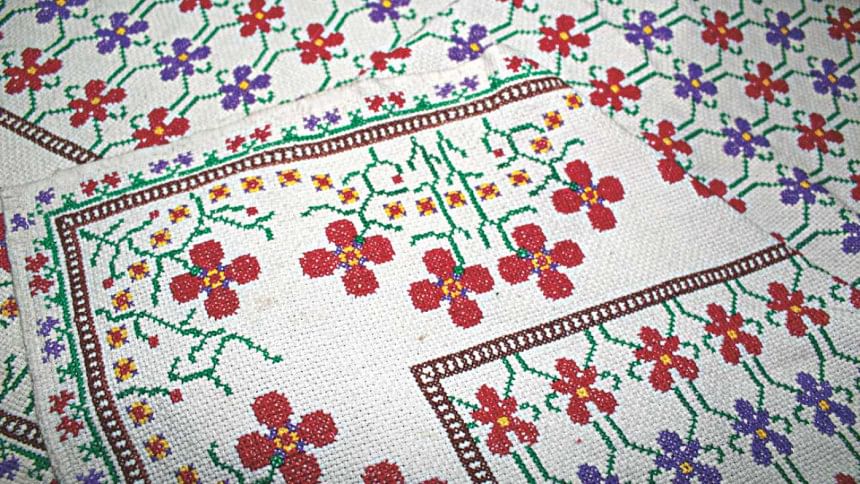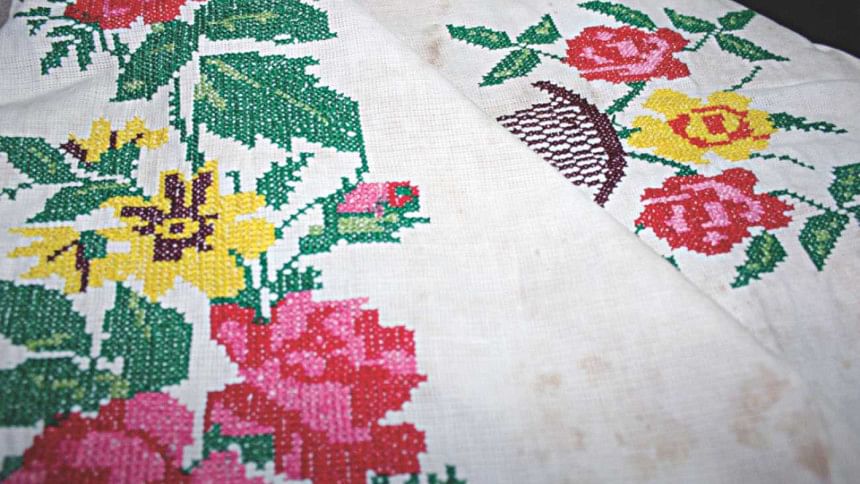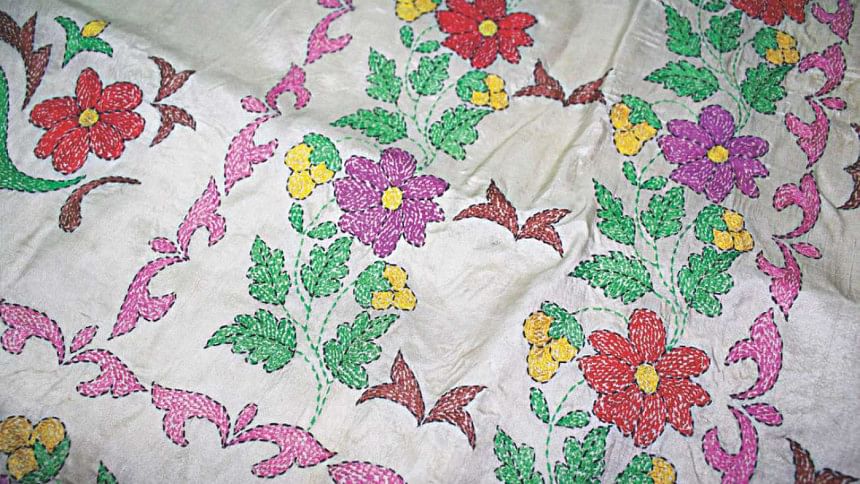Grandma's embroidery

The magic that lies in the thread and needle can only be coaxed by the most seasoned of fingers. If a fabric is a field, then the sewn blossoms and designs are the crops of patient artistry. Making such art requires painstaking effort and minute attention to the slightest detail, one micro misstep in the needle's turn and the entire work would have to be re-done.
Without a doubt, when this type of needle work is mentioned the first person to come into the mind's eye is one's grandmother. Bent over a swathe of fabric during her free time, the grandmother created her legacies meant to be cherished beyond generations.

Hand-made edgings on handkerchiefs, tablecloths with floral motifs, pillow covers with matching design segments from the bed cover— all these came from a grand mother's dexterous fingers.
Given the simpler times without the presence of the fast paced tech savviness of the 21st century, our grandmothers created these works as a sign of time well spent. The men of the family often sneered at this 'shelaiforai' as a female-only menial work, but little did they know that all of their more "important" work would hardly stand the tests of time like these beloved pieces would.

Decorative purposes aside, needle work was (and still) regarded as one of the best methods of destressing. Family troubles, unresolved self-struggle, unruly children— the woman of the house three generations back had the same troubles as now, but with less outlets of expression. Sewing and large embroidery projects were probably the only outlets our grandmothers had.
It is not unusual to see the rapid decline of at-home embroidery. It takes a lot of time and fingers shaped by years of dexterity. No matter how good you are with your contouring and match-3 games, when it comes to home economics projects at school, there is no way but to look for someone's grandmother. It is a lucky thing that the Nanis and the Dadis have not decided to cash in on these yet!
Urbanites congratulate themselves for buying a new outfit if the last one is missing a button, so it is understandable that needle work is not on anyone's priority list. But the worst part is the sheer ridicule someone faces if she takes up needle embroidery as a passion. And by heavens no, cannot even imagine a boy taking up a needle! But riddle me this — aren't the Dorji-s and the designers mostly men?

Every stitch in a grandmother's embroidery goes towards showing a story of life. Be it the simple 'kantha' from a rural background to some fancy needle work or lace and ribbons, every piece has a story embedded in it. Heirlooms like these define generations and reach to bridge over to the newer ones.
Preservation is not the only option here, the stories and memories behind a beautifully crafted stitch work stand as one of the corner stones of a family. While embroidery these days only reside in store-bought pieces or kits that promise the look and feel of a masterpiece, no one should be discouraged from being inspired by the works of old and creating heirloom pieces of their own.
By Iris Farina
Photo courtesy: Iris Farina

 For all latest news, follow The Daily Star's Google News channel.
For all latest news, follow The Daily Star's Google News channel. 



Comments